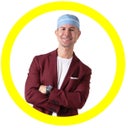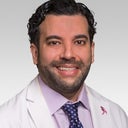The buccal fat pads are an often-overlooked portion of the facial aging process. The buccal fat pads naturally sit in the upper portion of the cheek and are designed to help us suckle as an infant. As we get older, the buccal fat pad descends into the jowl, giving the face a tired look. I often see patients from outside facilities who have had a facelift and they present stating “their jowls are back.” Typically, in these patients, the jawline still looks nice, but they have the “chipmunk cheeks” or what appears to be a “walnut” in their jaw, which is this buccal fat pad.




